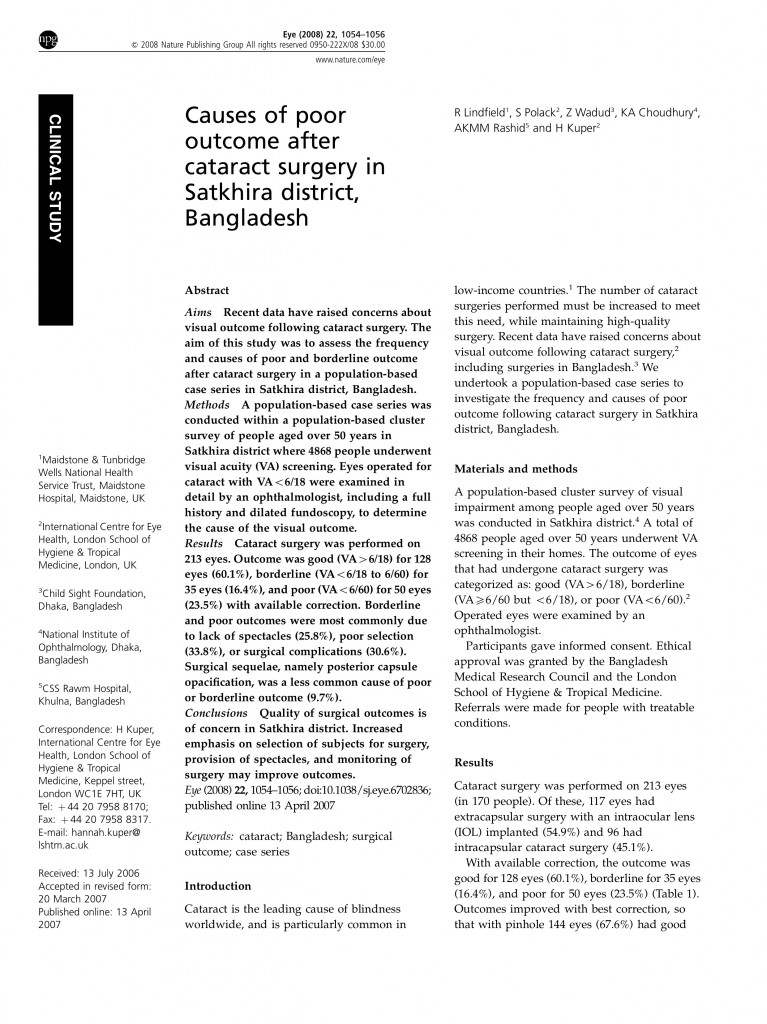Causes of poor outcome after cataract surgery in Satkhira district, Bangladesh
 Abstract
Abstract
Aims: Recent data have raised concerns about visual outcome following cataract surgery. The aim of this study was to assess the frequency and causes of poor and borderline outcome after cataract surgery in a population-based case series in Satkhira district, Bangladesh.
Methods: A population-based case series was conducted within a population-based cluster survey of people aged over 50 years in Satkhira district where 4868 people underwent visual acuity (VA) screening. Eyes operated for cataract with VAo6/18 were examined in detail by an ophthalmologist, including a full history and dilated fundoscopy, to determine the cause of the visual outcome.
Results: Cataract surgery was performed on 213 eyes. Outcome was good (VA46/18) for 128 eyes (60.1%), borderline (VAo6/18 to 6/60) for 35 eyes (16.4%), and poor (VAo6/60) for 50 eyes (23.5%) with available correction. Borderline and poor outcomes were most commonly due to lack of spectacles (25.8%), poor selection (33.8%), or surgical complications (30.6%). Surgical sequelae, namely posterior capsule opacification, was a less common cause of poor or borderline outcome (9.7%).
Conclusions: Quality of surgical outcomes is of concern in Satkhira district. Increased emphasis on selection of subjects for surgery, provision of spectacles, and monitoring of surgery may improve outcomes.
Partners
Maidstone & Tunbridge Wells National Health Service Trust, Maidstone Hospital, Maidstone, UK
International Centre for Eye Health, London School of Hygiene & Tropical Medicine
National Institute of Ophthalmology, Dhaka, Bangladesh
CSSRawm Hospital, Khulna, Bangladesh
Download
Lindfield et al (2008) Causes of poor outcome after cataract surgery in Satkhira district Bangladesh (PDF 78KB)
